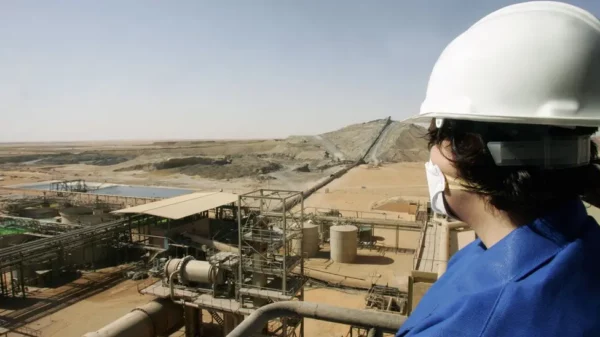The Province of Saskatchewan released the Cluff Lake uranium mine and mill site from decommissioning approvals, and the public now has unrestricted access to the area.
Orano Canada, the Canadian subsidiary of the French multinational Orano, made the announcement earlier this month. The Canadian Nuclear Safety Commission (CNSC) originally revoked Orano Canada’s uranium mine licence for the Cluff Lake Project last May, allowing Orano to transfer the site to the Province of Saskatchewan.
The CNSC has previously transferred properties at legacy uranium mining sites to provincial control, but Cluff Lake was the first decommissioned “modern” uranium mine to achieve this milestone.
Orano provided adequate funds to the Province of Saskatchewan for long-term monitoring and maintenance efforts (in perpetuity), leading to the acceptance of a long-term monitoring and maintenance plan.
Consequently, the Cluff Lake property will now enter the provincial Institutional Control Program (ICP). Saskatchewan established the ICP in 2007 as part of its institutional control framework to manage decommissioned and reclaimed mine and mill sites on provincial Crown lands long-term.
The ICP facilitates coordination between the provincial Ministry of Environment and the Ministry of Energy and Resources, and it clearly directs mining companies on the requirements for transferring a property. Additionally, the program ensures that the company funds any long-term monitoring, maintenance, or responses to overseen events.
The area now allows unrestricted public access, with no restrictions on traditional land use. Orano has noted that numerous studies have concluded that the area is safe for hunting, fishing, drinking water, and berry gathering today and in the future.
Read more: ATHA Energy discovers strong uranium mineralization at North Valour-East
Read more: ATHA Energy closes C$23.5M financing, continues exploration with stronger balance sheet
Operation is situated on Treaty 8 territory
The project, located about 75 km south of Lake Athabasca and 15 km east of the Alberta border, operated from 1979 to 2002. It produced more than 62 million pounds of U3O8 (23,848 tU) from two underground mines and four open pit mines.
The operation also included a tailings management facility, a mill, and other support facilities. Situated on Treaty 8 territory, the Homeland of the Métis, the Cluff Lake Project also lies within the traditional territories of the Dene, Cree, and Métis people. The full decommissioning of Cluff Lake occurred in 2013.
“The project shows that we, as responsible miners, have the ability and the experience to bring a uranium mining project through the entire life cycle successfully,” Xavier Saint Martin Tillet, the CEO of Orano Mining, said.
The Athabasca Basin in northern Saskatchewan, Canada, is renowned for containing some of the world’s richest uranium deposits, establishing it as a key center for uranium mining and exploration. The high-grade uranium ores and unique geological characteristics of the region have cemented its status as a top uranium mining district.
ATHA Energy Corp. (TSXV: SASK) (OTCQB: SASKF) (FRA: X5U) is one such company taking advantage of conditions in the basin.
The company is advancing its nine wholly-owned projects in the Athabasca Basin by conducting ground and airborne geophysical surveys. These surveys aim to deepen the company’s geological understanding of the sites, thereby increasing the likelihood of significant discoveries.
Building on the 17 EM surveys from last year’s initial campaign, which covered 3.8 million acres, ATHA aims to strategically allocate working capital for future drilling campaigns in the region based on the knowledge gained.
ATHA Energy Corp. is a sponsor of Mugglehead news coverage














